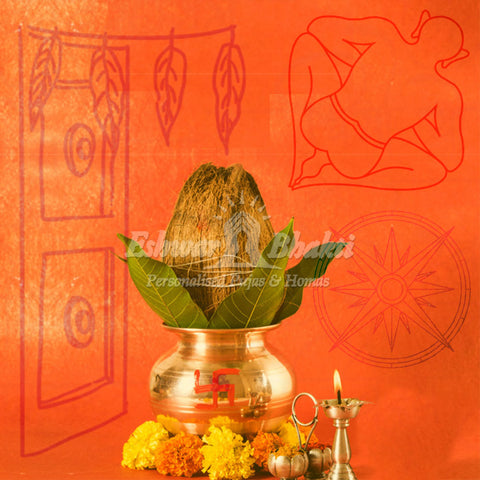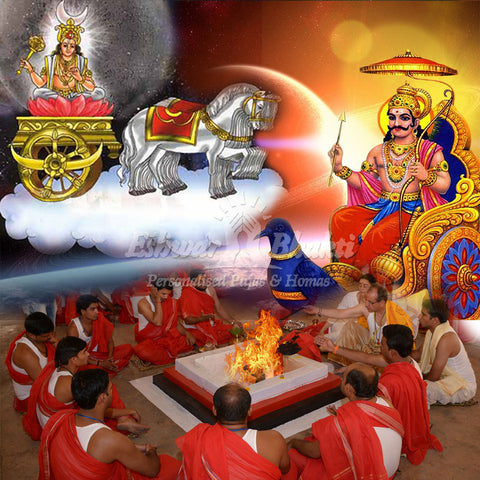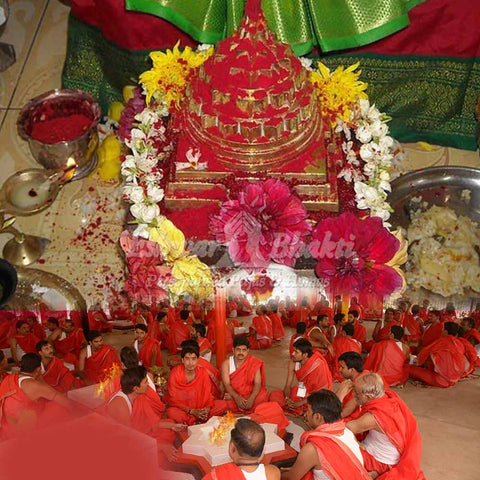What is Muhurta?
 Time is a significant concept, with explanations attached to it in different cultures and traditions. Since the Vedic age, people have relied upon the notion of time. In the ancient days in India, people calculated time using measurements that varied from prevalent Western norms. Muhurta refers to a period of 48 Western minutes or 30 Kalas. 30 Muhurtas in a single day and night is equivalent to 24 Western hours. As per the ancient scriptures, the Muhurtas can either be auspicious, neutral, or inauspicious. While engaging in any task, whether it be a puja or starting a new business, it is essential to consider the quality of the chosen Muhurta. When we perform our duty at a favorable Muhurta, the results would be much better and more positive.
Time is a significant concept, with explanations attached to it in different cultures and traditions. Since the Vedic age, people have relied upon the notion of time. In the ancient days in India, people calculated time using measurements that varied from prevalent Western norms. Muhurta refers to a period of 48 Western minutes or 30 Kalas. 30 Muhurtas in a single day and night is equivalent to 24 Western hours. As per the ancient scriptures, the Muhurtas can either be auspicious, neutral, or inauspicious. While engaging in any task, whether it be a puja or starting a new business, it is essential to consider the quality of the chosen Muhurta. When we perform our duty at a favorable Muhurta, the results would be much better and more positive.
Muhurta is a Sanskrit word derived from two other words-Muhu and Rta. Muhu means immediate or a moment, and Rta refers to an order. In RigVeda, Rta implies the yearly order of the different seasons. There is an elaborate explanation of Muhurta in RigVeda. One Muhurta is 30 Kalas or 48 minutes. Each Kala is equal to 30 Kashta, which is the same as 1.6 minutes. Apart from RigVeda, there are references to Muhurta in Satapatha Brahmana and Taittiriya Brahmana. As per Brahmanas, Muhurta is a division of time, which is either one-thirtieth of a day or 48 minutes. In Taittiriya Brahmana, there is a description of fifteen Muhurtas. They include Vijnanam, Samjnananam, Janad, Sabhijanat, Samkalpamanam, Prakalpanam, etc. In Manusmiriti, one Kastha refers to as 18 Nimisas. Nimisas means blinking of the eyes.
Types of Muhurtas: Before dealing with the significance of Muhurta in Puja, it is essential to look into the different Muhurtas in a day. They include :
1. Choghadiya Muhurta - It is an auspicious time best suited to start a new work. It is a practice in many Indian states. Here each period is known as Choghadiya, which is equal to one and a half hours or 3.75 Ghats. Here, the favorable Muhurtas are Shub, Labh, and Amrit. The inauspicious Muhurtas are Rog, Kal, and Udveg.
2. Brahma Muhurta -It is one and a half hours before sunrise. As per Ayurveda, there are three Doshas in our body. They are Vata (air and ether), Pitta (fire and water), and Kapha (earth and water). Within 24 hours, these Doshas have different periods of predominance. The time between 2 AM and 6 AM is the period when Vata is active, and Brahma Muhurta falls in it. So, the performance of meditation or yoga in Brahma Muhurta is highly beneficial.
3. Abhijit Muhurat - It is the best time of day to make investments and also for conducting meetings. When we engage in these tasks during Abhijit Muhurat, the results will be positive.
4. Rahu Kaal - It is an inauspicious time and is not suited to conduct any business transactions. Devotees restrain from performing holy deeds or pujas during Rahu Kaal. However, there is no problem in continuing the task you were already doing in Rahu Kaal.
5. Shubh Hora - It refers to the auspicious timing in a day. It is the best fit for delivering prayers, rituals, and wedding ceremonies. As weddings are new beginnings, people choose Shub Muhurtas before performing it.
These are some of the Muhurtas of the day. It is always better to plan your day according to Shubh Muhurtas. When we conduct Pujas, it is beneficial to do so in an auspicious Muhurta. It is because it would enhance the results as well as improve our connection with the Divine power.
Significance of Muhurta in a Puja: In Hinduism, devotees choose an auspicious time for performing rituals, prayers, ceremonies, and pujas. As per astrological beliefs, the chances of succeeding in a task increases when performed in an auspicious Muhurta. Similarly, you can imbibe the benefits of taking part in a Puja when we perform it in a favorable Muhurta.
• In the ancient Vedic days, people chose Muhurtas for conducting Yagnas.
• People who don't have a birth chart or suffer from a Dosha must look at the Muhurta while engaging in Pujas.
• Taking part in Pujas during an auspicious Muhurta can evade evil forces and negative vitalities.
• As per astrology, a Muhurta, which is favorable, can help in removing the imbalances of energy flow in our bodies.
• It helps us in making better decisions and also provides us with confidence.
These are some of the significances associated with conducting or participating in a puja during an auspicious time. Always note that Pujas in temples are performed based on the Muhurtas. In a Muhurta, the alignment of planets is noteworthy. Their arrangement aids in attaining positive results in the tasks one might be endeavoring. In astrology, it is essential to consider the combination of weekdays with Ascendant and Nakshatra to gain a better understanding of the Muhurta. It is best to engage in a task:
• When our Kundali has no planet in its eighth house
• When the Ascendant is on an auspicious planet
• When the Ascendant is not along with the Paap Kartari and the Moon
• When it is not a New Moon day
• When it is the fourth, ninth, or fourteenth days of the lunar month
• When the planet is in Trikha or Kendra house
• When it is not in Rikta Tithi
These are some of the aspects of finding the auspicious Muhurta as per astrology. They are best suited for starting a new business, conducting ceremonies like marriage, house warming, pujas, and other new ventures. It enhances the chances of gaining a positive result in the work you are doing.




Comments
it possible to explain abt other muhurtham as well. there are 30 muhurtham but only brahma muhurtham is explained everywhere not the rest. thks